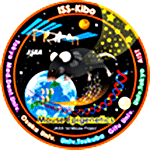This is an archive of information released in the past.
Disclaimer: It may contain broken links or outdated information. Some parts may not function in current web browsers.
*Visit https://humans-in-space.jaxa.jp/en/ for the latest information.

Experiment
- News
- Kibo Utilization Strategy
- Kibo Utilization Plan
- List of JAXA's Utilization Themes
- Experiment Facilities
- Space Environment Utilization
- Archive
A Japan-US joint study has revealed that artificial gravity load is effective to reduce impairment in eyeball tissues during long stay in space: an achievement of "Kibo" rodent mission stepping to future human space exploration to Moon and Mars

Japan Aerospace Exploration Agency (JAXA)
【Summary】
- Certain alterations and disorders due to microgravity occur in an astronaut's body during his/her long stay in space. One of such alterations is impairment in eyeball tissues that may result in visual impairment after return to the Earth. Such alteration is recognized as one of the key issues that should be resolved in view of long stay in the International Space Station (ISS) and future human space exploration.
- Various research activities are going on in the ISS to identify the causes of and possible countermeasures against the eyeball impairment. Among such, it will be prospective to evaluate gravitational effects on animal eyeball tissues and accumulate precise, molecular-level analysis data through rodent research that NASA and JAXA are focusing on respectively.
- Only JAXA's Kibo module has such an experiment capability that strict evaluation of the gravitational effect on mice is possible by comparing groups of mice reared under microgravity and artificial gravity conditions.
- As a new Japan-US collaborative framework, the "Japan-US Open Platform Partnership Program (JP-US OP3)" was established in 2015 to make use of precious opportunities in the ISS for space experiments in more efficient and effective ways and to maximize outcomes. In this framework, a Japan-US joint analysis to resolve eyeball tissue impairment has been conducted for the first time in both rodent missions to collaboratively tackle common challenges in human space activities.
- The joint analyses of the tissues obtained by JAXA's first 35-day rodent mission of July to August 2016 revealed that the impairment (apoptosis and appearance of protein associated with it) was shown in the retina of mice reared under the microgravity condition, but reduced in those reared under the artificial gravity environment.
- Although it has been reported that the impairment in eyeball tissues of mice occurred in some space experiments, the effects of small-dose radiation and gravity load during launch and reentry phases were not discrimnated, and thus not eliminated, since the previous experiments were based on comparison with mice reared on the Earth. In this study, however, the use of the JAXA's unique on-orbit artificial "1G" environment revealed for the first time that the microgravity may cause impairment in eyeball tissues that affects the visual system. Further analyses will probably help us understand its mechanism more precisely.
- It addition, this study was achieved only through the collaboration of the Japanese team led by professor Satoru Takahashi of the University of Tsukuba which is engaged in the unique detailed analysis of the effect of on-orbit artificial gravity load on mice and the US research team which has studied for many years the effect of space flight stresses on visual system.
- The results were published in the on-line International Journal of Molecular Sciences of August 28, 2018, as the first scientific achievement of the collaboration under JP-US OP3.
- Regarding these results as the first step for further collaborative activities, JAXA and NASA will lead to accumulate analysis data required for advancing human space exploration.
【Information on the Article】
Journal:International Journal of Molecular Sciences
Title:Impact of Spaceflight and Artificial Gravity on the Mouse Retina:Biochemical and Proteomic Analysis
Co-authors:Xiao W. Mao (1), Stephanie Byrum (2,3), Nina C. Nishiyama (1), Michael J. Pecaut (1), Vijayalakshmi Sridharan (4), Marjan Boerma (4), Alan J. Tackett (2,3), Dai Shiba (5), Masaki Shirakawa (5), Satoru Takahashi (6) and Michael D. Delp (7)
1) Department of Basic Sciences, Division of Biomedical Engineering Sciences (BMES), Loma Linda University School of Medicine and Medical Center, Loma Linda, CA 92350, USA
2) Department of Biochemistry and Molecular Biology, University of Arkansas for Medical Sciences, Little Rock, AR 72205, USA.
3) Arkansas Children's Research Institute, Little Rock, AR 72202, USA
4) Division of Radiation Health, Department of Pharmaceutical Sciences, University of Arkansas for Medical Sciences, Little Rock, AR 72205, USA
5) JEM Utilization Center, Human Spaceflight Technology Directorate, JAXA, Tsukuba 305-8505, Japan
6) Department of Anatomy and Embryology, University of Tsukuba, Tsukuba 305-8575, Japan
7) Department of Nutrition, Food and Exercise Sciences, Florida State University, Tallahassee, FL 32306, USA
Related Link
*All times are Japan Standard Time (JST)
| Copyright 2007 Japan Aerospace Exploration Agency | Site Policy |